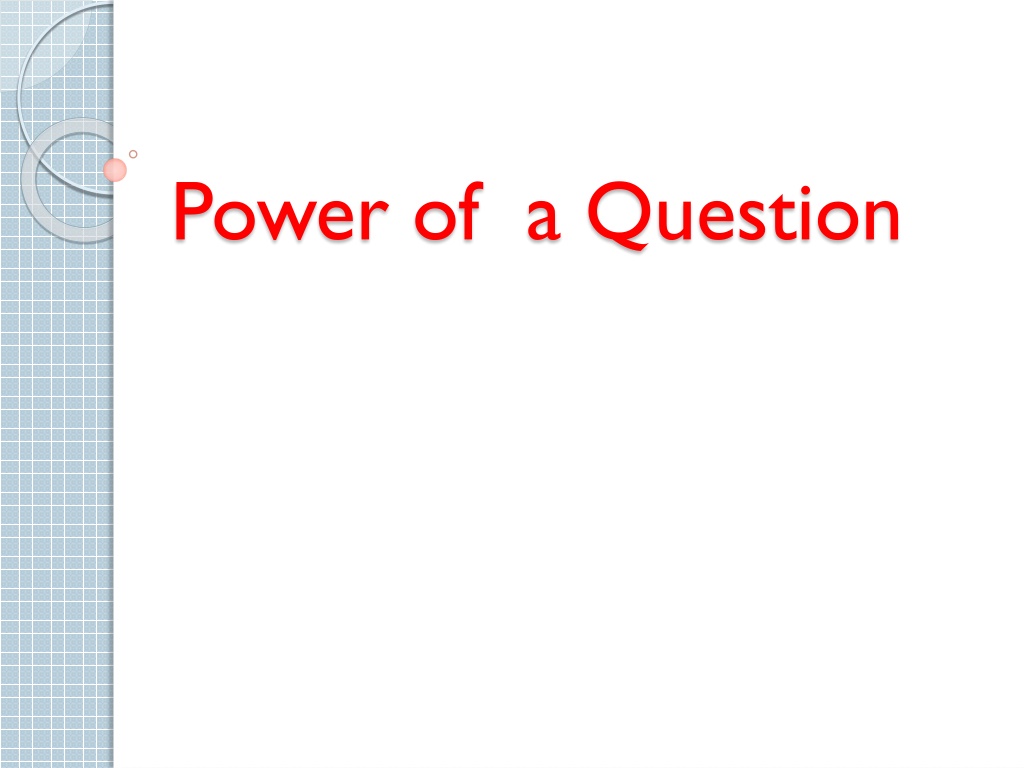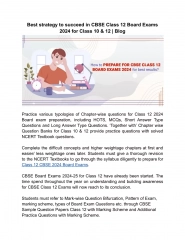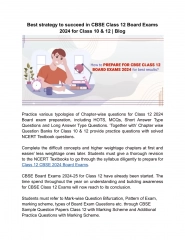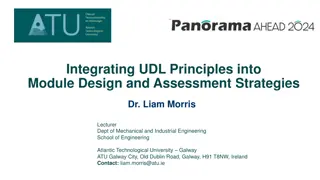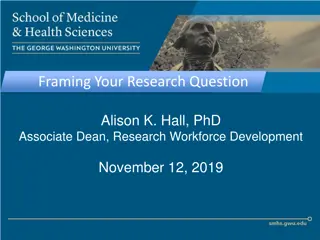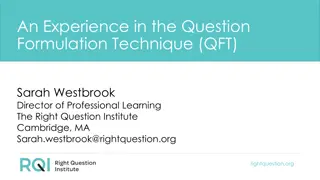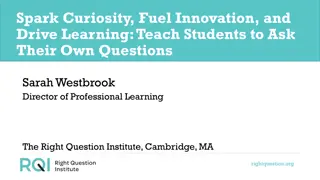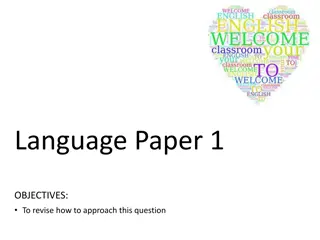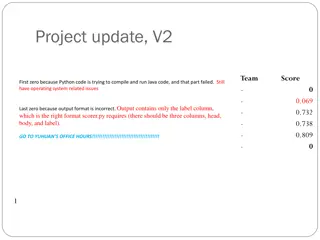Enhancing Question Design for Effective Learning
Explore the key principles behind creating effective questions, such as specificity, clarity, and validity. Avoiding complexity and ambiguity in questions ensures fair assessment and accurate grading. Sample questions illustrate the importance of framing questions clearly to enhance learning outcomes.
Download Presentation

Please find below an Image/Link to download the presentation.
The content on the website is provided AS IS for your information and personal use only. It may not be sold, licensed, or shared on other websites without obtaining consent from the author. Download presentation by click this link. If you encounter any issues during the download, it is possible that the publisher has removed the file from their server.
E N D
Presentation Transcript
Questions should be set on a specific aspect or topic so as to avoid large variation in the content of expected answers. Avoid complex sentences.
Attributes of good question design Reliability Validity Authenticity Fairness Clarity Think about points such as: confusing and ambiguous using complicated vocabulary, difficult or poor sentence structure, unnecessary and distracting detail.
Sample Questions for Clarity Q. Distinguish between the roots of mustard plant and rice plant. More Appropriate framing for above Question:- Q. Distinguish between the roots of mustard plant and roots of rice plant.(3 points)
Some More Examples of Qs Seeking Clarity!! Q.Plants produce many seeds at a time reframed Q. Why does some plants as tomato produces many seeds at a time .
Attributes of good question design Reliability Validity Authenticity Fairness Does the question allow markers to grade it consistently and does it allow markers to discriminate between different levels of performance?
Sample Question for Reliability Q. (i) Name the method used to separate the cashew nuts of different sizes. More Appropriate framing for above Question:- Q. (i) Name the most preferred method used to separate the cashew nuts of different sizes.
Attributes of good question design Reliability Validity Authenticity Fairness Validity consists of Coverage of content Test all levels of cognitive ability Convey intentions of the paper setter
Sample Question for Validity Q(i) Identify the device shown here. (ii)What is its use? (iii)Name a mixture whose components can be separated by this process. Q. (i) Name a mixture whose components can be separated by this centrifugal machine. (ii)On what principle is it based upon. (iii)Write any one practical application of this machine Q. Following is the picture of a centrifuging machine. i. Name a mixture whose components can be separated using this machine ii. What principle is used in this separation technique/method.
Attributes of good question design Clarity Reliability Validity Authenticity Fairness Authenticity is the need to relate it to the real life.
Sample Question for Authenticity Q. (i)Name the device used to separate iron nails from sand. (ii)Why do the iron nails be collected fast by using a magnet? More Appropriate framing for above Question:- Q. During construction of Rishabh s new house, a worker was working with sand. Suddenly a box of iron nails fell into the sand by the worker. He was thinking about a method to separate iron nails from sand. On observing this, Rishabh went to the worker and gave him a magnet to separate the iron nails fast. a. Name the separation technique used here. b. Why iron nails may be collected faster using a magnet? c. Which value is shown by Rishabh here?
Attributes of good question design Clarity Reliability Validity Authenticity Fairness Fairness can be facilitated by : Being very clear about expectations in student performance, transparency in the processes to mark and grade their work.
Sample Question for Fairness The following three examples have been framed to analyse the understanding of the same concept. Which one do you think is the best? Q. Which type of mixture is sugar in water? Justify your answer. Q. Sugar in water is a homogenous mixture. Is it yes or no? Give reason in support of your answer. Q. Justify or counter the following statement: Sugar in water is a homogenous mixture ---BEST
Creating scientific questions.Developing questions is a skill that requires practice, just like hitting a baseball. four basic guidelines for writing scientific questions. 1. A good scientific question is clear about what is being asked . "Why is that a rock?" is not as good a question as "What are rocks made of?"
Verification questions. These are basic data collecting questions. They are useful in building knowledge. Examples are: Is it cold today? Is the sun still out? Is a flame hottest when it is blue?
These questions increase knowledge of the subject, but need prior knowledge to be asked. Examples are: Do clouds have to be in the sky for it to rain? Why do you add acid to water instead of water to acid?
A good scientific question can be tested by some experiment or measurement that you can do. In this case How does the Sun radiations affect us?" is not as good as, "How will human skin, covered with SPF 30 suntan lotion, react to solar radiation compared to skin not covered with suntan lotion?"
A good scientific question builds on what you already know. "Will fertilizer make grass grow greener?" is not as good as, "What types of fertilizer will make grass grow greener and not cause harm to the environment?"
A good scientific question, when answered, leads to other good questions. "What is HIV?" does not lead to as many other questions as, "How does the HIV virus cause the human immune system to malfunction?
BLOOMS TAXANOMY Comprises of six levels of questioning 1. KNOWLEDGE- recalls information KEYWORDS: who, what, why, when, where, choose, find, how, define, label, show, spell, list, match, relate, tell,recall, select Q.Where can you find cardiac muscles?
CONTINUED COMPREHENSION- putting information in other form. KEYWORDS: compare, contrast, demonstrate, interpret, explain, comparing, translating, interpreting, stating main ideas Q.Growing of trees and bushes along the boundaries of fields is helpful to the farmers. Explain
CONTINUED APPPLICATION Apply facts, principles or generalizations to solve a problem. KEYWORDS: apply, build, choose, construct, develop, interview, make use of, organize, experiment with, plan, select, utilize, model, identify
CONTINUED . ANALYSIS- Identify and comprehend elements of a process, communication or series of events. KEYWORDS: analyze, categorize, classify, compare, contrast, discover, dissect, divide, examine, inspect, simplify, survey, test, distinguish, relationship, function, motive, inference, assumption, conclusion
CONTINUED SYNTHESIS- engaged in original creative work KEYWORDS: build, choose, combine, compile, compose, construct, create, design, develop, estimate, formulate, imagine, invent, make up, originate, plan, predict, propose, solve, solution, suppose, discuss, modify, change, original, improve, adapt, minimize, maximize, theorize, elaborate, test, happen, delete
CONTINUED 6. EVALUATION- determines how closely a concept or idea is consistent with the standards or values. KEYWORDS: award, choose, conclude, criticize, decide, defend, determine, dispute, evaluate, judge,justify, measure, compare, mark, rate, recommend, rule on, select, agree, appraise,prioritize, opinion, interpret, explain, support importance, criteria, prove, disprove,assess, influence, perceive, value, estimate, deduct
REVISED TAXANOMY Uses the verb forms to reflect the above categories as- 1. Remembering 2. Understanding 3. Applying 4. Analyzing 5. Evaluating 6. Creating
. Finally create and write your own (good) questions.
